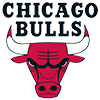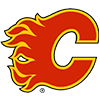Two weeks ago, I wrote about how power appears to be headed for a down year in 2021 compared to the last two* seasons, and that has continued to hold up. As play began on April 21, the table below shows how the offense is holding up in March/April compared to recent seasons. The other seasons are showing the entirety of the April portion of the statistics:
Season | AVG | OBP | SLG | HR/FB | HARD% | BB% | K% |
|---|---|---|---|---|---|---|---|
2015 | .250 | .315 | .390 | 10.2% | 28.2% | 8.0% | 20.1% |
2016 | .249 | .319 | .405 | 11.8% | 30.0% | 8.6% | 21.3% |
2017 | .247 | .317 | .407 | 12.8% | 31.5% | 8.7% | 21.6% |
2018 | .244 | .319 | .400 | 11.9% | 34.0% | 9.0% | 22.7% |
2019 | .245 | .321 | .421 | 14.4% | 37.2% | 9.2% | 23.3% |
2021 | .232 | .311 | .390 | 13.3% | 31.5% | 9.1% | 24.6% |
You will see these numbers quoted in the coming weeks. Some will attribute this solely to the new baseball and move on while overlooking the decision to re-introduce pitchers hitting in National League games. Here is how that same chart looks when you remove pitchers "hitting" from the data set:
Season | AVG | OBP | SLG | HR/FB | HARD% | BB% | K% |
|---|---|---|---|---|---|---|---|
2015 | .250 | .315 | .390 | 10.2% | 28.2% | 8.0% | 20.1% |
2016 | .249 | .319 | .405 | 11.8% | 30.0% | 8.6% | 21.3% |
2017 | .247 | .317 | .407 | 12.8% | 31.5% | 8.7% | 21.6% |
2018 | .244 | .319 | .400 | 11.9% | 34.0% | 9.0% | 22.7% |
2019 | .245 | .321 | .421 | 14.4% | 37.2% | 9.2% | 23.3% |
2021withP | .232 | .311 | .390 | 13.3% | 31.5% | 9.1% | 24.6% |
2021w/oP | .236 | .315 | .397 | 13.4% | 31.9% | 9.2% | 24.0% |
Pitchers have represented 3 percent of all plate appearances this season, but
Two weeks ago, I wrote about how power appears to be headed for a down year in 2021 compared to the last two* seasons, and that has continued to hold up. As play began on April 21, the table below shows how the offense is holding up in March/April compared to recent seasons. The other seasons are showing the entirety of the April portion of the statistics:
Season | AVG | OBP | SLG | HR/FB | HARD% | BB% | K% |
|---|---|---|---|---|---|---|---|
2015 | .250 | .315 | .390 | 10.2% | 28.2% | 8.0% | 20.1% |
2016 | .249 | .319 | .405 | 11.8% | 30.0% | 8.6% | 21.3% |
2017 | .247 | .317 | .407 | 12.8% | 31.5% | 8.7% | 21.6% |
2018 | .244 | .319 | .400 | 11.9% | 34.0% | 9.0% | 22.7% |
2019 | .245 | .321 | .421 | 14.4% | 37.2% | 9.2% | 23.3% |
2021 | .232 | .311 | .390 | 13.3% | 31.5% | 9.1% | 24.6% |
You will see these numbers quoted in the coming weeks. Some will attribute this solely to the new baseball and move on while overlooking the decision to re-introduce pitchers hitting in National League games. Here is how that same chart looks when you remove pitchers "hitting" from the data set:
Season | AVG | OBP | SLG | HR/FB | HARD% | BB% | K% |
|---|---|---|---|---|---|---|---|
2015 | .250 | .315 | .390 | 10.2% | 28.2% | 8.0% | 20.1% |
2016 | .249 | .319 | .405 | 11.8% | 30.0% | 8.6% | 21.3% |
2017 | .247 | .317 | .407 | 12.8% | 31.5% | 8.7% | 21.6% |
2018 | .244 | .319 | .400 | 11.9% | 34.0% | 9.0% | 22.7% |
2019 | .245 | .321 | .421 | 14.4% | 37.2% | 9.2% | 23.3% |
2021withP | .232 | .311 | .390 | 13.3% | 31.5% | 9.1% | 24.6% |
2021w/oP | .236 | .315 | .397 | 13.4% | 31.9% | 9.2% | 24.0% |
Pitchers have represented 3 percent of all plate appearances this season, but their overall numbers are so bad they have that kind of impact on the bottom line. Pitchers (and this excludes Shohei Ohtani) are hitting .104/.134/.122 this season with a 47 percent strikeout rate. The larger point is that the downturn in offense is not all about the baseball, and the removal of the Universal DH should not be overlooked as it shows up once we look at the differences in the leagues to date against earlier seasons with the same rules:
Season | NL March/April ERA | AL March/April ERA | NL March/April AVG | AL March/April AVG | NL March/April K% | AL March/April K% | |
|---|---|---|---|---|---|---|---|
| 1 | 2015 | 3.91 | 4.01 | .255 | .254 | 20.7% | 20.1% |
| 2 | 2016 | 4.17 | 4.21 | .254 | .257 | 21.3% | 20.9% |
| 3 | 2017 | 4.34 | 4.38 | .256 | .254 | 21.7% | 21.6% |
| 4 | 2018 | 4.03 | 4.27 | .245 | .250 | 22.4% | 22.1% |
| 5 | 2019 | 4.39 | 4.62 | .250 | .255 | 23.2% | 22.7% |
| 6 | 2021 | 4.04 | 4.48 | .225 | .243 | 25.4% | 24.8% |
We are accustomed to the difference in run environments between the two leagues in normal seasons, but that difference is more exacerbated this season than in recent season. Pitchers took a year away from their side hustle at the plate, and most did not even get real about integrating hitting routines in camp until a few weeks into camp as teams held out hope the league would cave late and allow the Universal DH to stick around another season.
Offense is down, strikeouts are up, but this issue is not just on the pitchers who are not hitting because they have plenty of company with some rather notable names.
The scatterplot below shows all hitters who have faced at least 200 pitches as play began on April 21st and how many pitches they've swung and missed at:

Three players have swung and missed at 10 or fewer pitches:
- Michael Brantley - 10 times in 212 pitches (4.7%)
- David Fletcher - 8 times in 250 pitches (3.2%)
- Nick Madrigal - 4 times in 219 pitches (1.8%)
This article is not about those guys; it is about the ones at the other end of the spectrum as we have eight hitters who have swung and missed at at least 20 percent of their pitches to date in season. The table below shows their same rates in 2020:
Hitter | 2021 Whiff% | 2020 Whiff% | YoY% |
21.7% | 21.4% | 1.4% | |
19.6% | 18.9% | 3.7% | |
19.8% | 17.5% | 13.1% | |
20.7% | 17.9% | 15.6% | |
21.5% | 15.8% | 36.1% | |
20.1% | 14.5% | 38.6% | |
28.6% | 20.1% | 42.3% | |
20.2% | 11.7% | 72.6% |
Hiura is off to a horrific start at the plate with a .118/.250/.216 line striking out in 37 percent of his plate appearances. He now has what equates to a full season of playing time in his major league career and while his .253/.330/.479 line is good, the 33 percent strikeout rate is troublesome as it has gotten worse each season. This year, he has the added pressure of playing a new position, but one has to wonder how much longer Milwaukee can keep him in the lineup when his offensive production is barely ahead of the pitchers hitting behind him and one of every five swings comes up empty while more than a third of his plate appearances do not even put the ball in play. Teammate Garcia is at least back to his natural position and out of center, and his overall numbers are well in line with recent performances. The extra swing-and-miss this year is not that far out of line for him and has not impacted his production.
Mountcastle had a rough spring training, which has carried into the regular season with two walks and 21 strikeouts in just 62 at-bats. He has had a noticeable spike in empty swings and his strikeout percentage has dropped from 21 to 32 percent year over year. Baltimore is not going anywhere and can continue to play him, but we should reset our expectations for him as long as he continue to struggle making contact. Adames slumped mightily in 2020, particularly at home, and has mostly picked up in 2021 where he left off last season at the plate. He has struck out in 30 percent of his plate appearances, which is actually better than the 36 percent rate he put up in 2020, yet has more empty swings to date this season as he deals with the pressures of wunderkind Wander Franco over his shoulder. Perez was bound to come down from his big batting average year of a season ago, yet the rest of his production numbers are right in line with normal Perez seasons despite a career-high 27 percent strikeout rate this season. It bears watching as part of Perez's allure is his ability to hit for average at a position so few players do so.
Ohtani is the unicorn here, as always, because the increase in empty swings has done absolutely nothing to his production. He is crushing the ball this season, and his strikeout rates are in line with previous seasons even if he is coming up empty more frequently this season than he did in 2020. If we expect anyone to course correct in short order, it is him. Bradley Jr. missed most of spring training due to his late signing, so his issues can mostly be written off to the late start to live training. That brings us to the other red dot at the far extreme of the earlier scatterplot in Baez.
Baez entered Wednesday hitting .200/.250/.433 with a 48 percent strikeout rate, walking once and striking out 31 times in 64 plate appearances. Kevin Goldstein wrote up a great piece at FanGraphs earlier this week which is worth your time to read and watch the videos within it. Maybe Baez is pressing on the verge of free agency, but his awful start to 2021 on the heels of his putrid 2020 is raising more doubts than any pending free agent needs on their resume. Baez is 0-for the season against fastballs having seen 86, with these outcomes:

Since the start of the 2020 season, these are the outcomes of Baez on all pitches over the 299 plate appearances:

The 29 percent swing-and-miss rate this season is even worse than it was last year, and the fact he is putting fewer than 20 percent of fastballs even in play means the book is out on him in the league. Where the league once avoided throwing Baez a fastball like it does paying minor leaguers, they now are challenging him with regularity knowing they stand a more-than 80 percent chance to survive the overall encounter and fastballs in 2021 are nearly a sure thing. Whatever your expectations were for Baez on your roster, they should be severely recalibrated until he shows more ability to make overall contact, particularly on fastballs — of which he will continue to see plenty of until he proves to the league he can once again hit them.
























